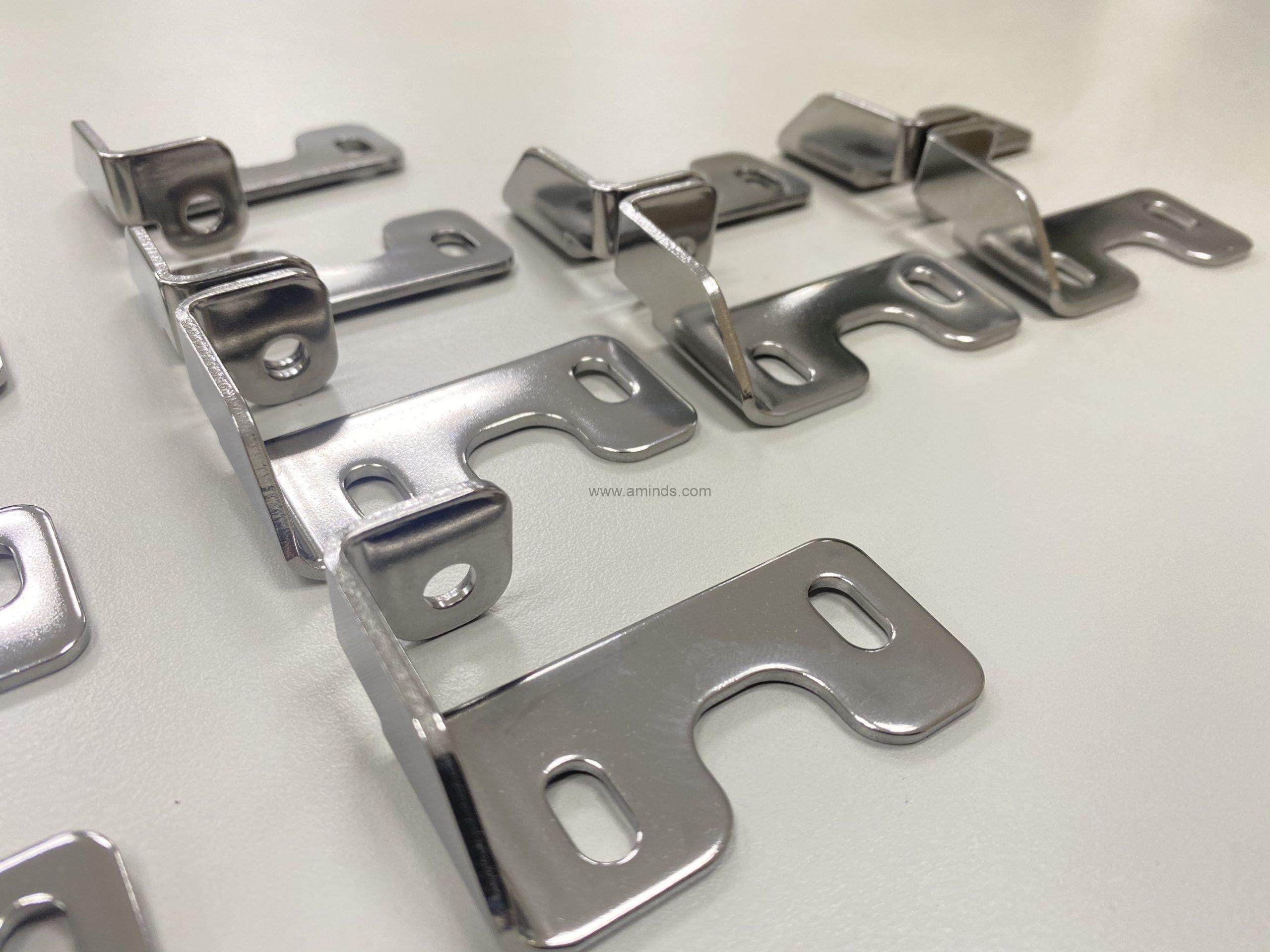Why Metal Stamping is Essential for Developing Resilient and Intricate Components
Wiki Article
Advanced Techniques in Metal Stamping for Precision Manufacturing
As sectors constantly require better resistances and elaborate layouts in their metal elements, the mission for innovative methods in steel stamping has intensified. From the application of advanced multi-stage stamping processes to the integration of sophisticated automation modern technologies, the landscape of metal marking is undergoing a profound transformation.Advanced Multi-Stage Stamping Procedures
Talking about the complexities of sophisticated multi-stage stamping processes reveals the innovative techniques employed in modern manufacturing techniques. Metal Stamping. Multi-stage stamping is a complex process that entails several actions to transform a flat sheet of metal into a last stamped product. Using dynamic dies, where different operations are done at each phase of the stamping process, allows for high accuracy and effectiveness in the manufacturing of elaborate metal partsDuring the initial phases of multi-stage stamping, the flat steel sheet is fed right into the marking press, where a collection of dies are used to reduce and form the product. Succeeding phases include added forming, bending, and punching procedures to further improve the part. Each phase is very carefully made to build on the previous one, resulting in the production of intricate geometries with tight resistances.
Advanced multi-stage marking procedures need a high degree of proficiency and accuracy to guarantee the quality and consistency of the stamped parts. By using advanced machinery and tooling, makers can create a broad range of steel elements with performance and accuracy.
Precision Tooling Innovations
Precision tooling innovations have actually transformed the steel marking market, boosting efficiency and high quality in making procedures. CNC systems allow for complex styles to be converted straight into tooling, guaranteeing precision and repeatability in the marking process.In addition, the combination of sensors and real-time tracking capacities in precision tooling has allowed suppliers to identify and resolve concerns without delay, decreasing downtime and reducing scrap rates. By integrating clever modern technology into tooling, operators can enhance criteria such as pressure, rate, and alignment during the stamping procedure, leading to improved item high quality and increased performance.

Automation in Steel Stamping
The evolution of accuracy tooling innovations in the steel stamping industry has paved the way for substantial developments in automation, changing the production landscape in the direction of raised efficiency and efficiency. Metal Stamping. Automation in steel stamping includes the usage of advanced equipment and robotics to execute various tasks typically performed by human operators. This change towards automation provides countless benefits, including improved precision, faster production cycles, and lowered labor costsOne trick aspect of automation in steel marking is the execution of computer system mathematical control (CNC) systems, which allow precise control over the marking procedure. CNC technology enables the development of complex and elaborate metal parts with regular top quality. Additionally, automated systems can be set to run continuously, resulting in higher outcome rates and much shorter preparations.
Moreover, automation improves office safety and security by decreasing hand-operated handling of hefty products and decreasing the risk of accidents (Metal Stamping). As manufacturing industries proceed to welcome automation, the future of steel stamping holds fantastic guarantee for even greater efficiency and technology
High-Speed Stamping Techniques

One of the main advantages of high-speed marking strategies is the capacity to produce a large quantity of components in a much shorter amount of time compared to typical stamping approaches. This boosted performance not only enables suppliers to meet tight production target dates but also makes it possible for price savings with economic climates of range. In addition, high-speed marking can help in reducing product waste by optimizing the product use during the marking procedure.
In addition, high-speed stamping strategies usually incorporate innovative attributes such as quick die adjustment systems and real-time tracking capacities, additionally enhancing the overall efficiency and versatility additional resources of the steel marking process. web As innovation proceeds to breakthrough, high-speed marking is anticipated to play an essential function in driving the future of accuracy production.
Quality Assurance in Stamping Operations
Efficient quality assurance steps are necessary for ensuring the reliability and uniformity of metal marking operations. Quality control in stamping procedures includes a collection of methodical processes targeted at spotting and protecting against flaws in the made parts. One important facet of top quality control in metal marking is making use of innovative inspection methods such as optical inspection systems and coordinate measuring makers (CMMs) to validate the dimensions and tolerances of stamped parts.Furthermore, high quality control procedures in stamping operations often consist of the implementation of analytical procedure control (copyright) approaches to monitor the production procedure in real-time and make sure that it stays within appropriate restrictions. By evaluating data and recognizing fads, suppliers can proactively attend to any kind of variances from the desired quality requirements.
Additionally, quality assurance in steel marking procedures additionally includes thorough material testing to guarantee that the raw materials made use of satisfy the required requirements for the marking process. This may consist of carrying out material hardness examinations, tensile strength tests, and dimensional examinations to ensure the next top quality and integrity of the stamped parts. Generally, executing robust quality assurance steps is important for attaining top quality stamped parts consistently.
Final Thought
In final thought, progressed techniques in metal stamping play an essential duty in precision production processes. With multi-stage stamping processes, cutting-edge tooling options, automation, high-speed strategies, and extensive quality control measures, manufacturers can attain higher levels of accuracy and efficiency in their operations. These developments in steel stamping technology have actually enabled companies to produce complicated components with limited tolerances, inevitably causing enhanced item quality and client fulfillment in the production industry.Report this wiki page